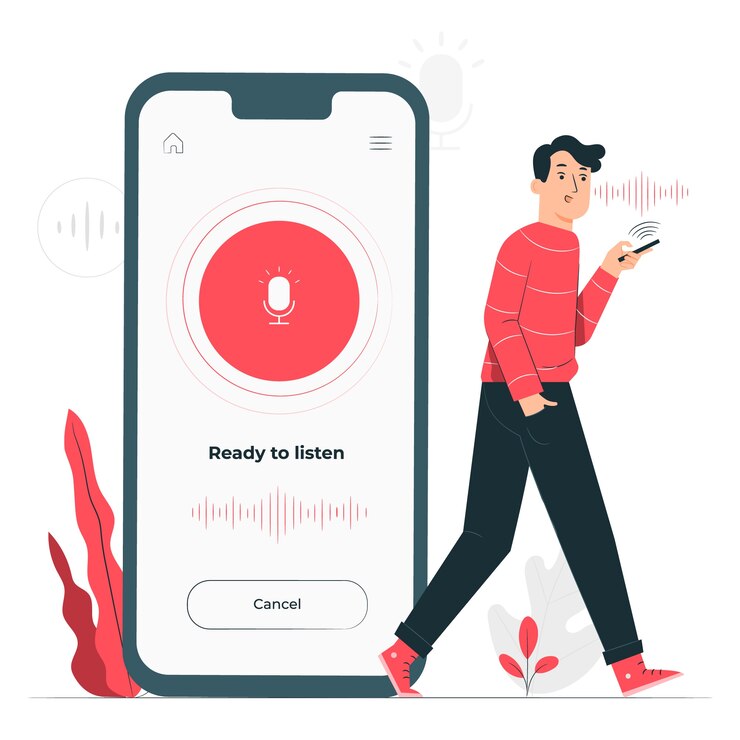Introduction
With the rapid advancement of technology and artificial intelligence, voice search has become an integral part of how users interact with digital content. Smart devices like Amazon Echo, Google Home, Apple’s Siri, and Microsoft’s Cortana have changed the way people search for information online. As a result, optimizing for voice search is no longer optional—it’s essential for businesses looking to stay ahead in the digital landscape.
This guide will provide an in-depth understanding of voice search optimization, its significance, and actionable strategies to help you optimize your content for voice-driven searches.
What is Voice Search Optimization?
Voice search optimization (VSO) is the process of refining digital content to enhance visibility in voice-based search queries. Unlike traditional text-based searches, where users type keywords, voice searches are typically longer and more conversational. Users expect precise and immediate answers, making it crucial for businesses to tailor their content accordingly.
Importance of Voice Search Optimization
- Rising Popularity of Voice Assistants: With an increasing number of users relying on voice assistants for quick searches, businesses must adapt to this trend to capture a larger audience.
- Improved User Experience: Voice search provides faster, more convenient answers, improving overall user satisfaction.
- Higher Local Search Relevance: Many voice searches are location-based (e.g., “near me” queries), making VSO critical for local businesses.
- Enhanced Search Engine Rankings: Websites optimized for voice search often have better rankings due to their user-focused content structure.
- Changing Consumer Behavior: With mobile searches surpassing desktop searches, users prefer hands-free convenience, making voice search indispensable.
How Voice Search Works
Understanding how voice search operates can help you optimize your content effectively. Voice search relies on three key components:
- Speech Recognition: The voice assistant converts spoken words into text.
- Natural Language Processing (NLP): AI algorithms interpret the meaning behind the spoken words.
- Search Query Execution: The assistant retrieves relevant content from search engines and delivers a spoken response.
Voice search algorithms prioritize content that is concise, conversational, and authoritative. Therefore, businesses must adapt their content strategy to align with these criteria.
Strategies for Voice Search Optimization
1. Use Conversational and Long-Tail Keywords
Unlike text searches, where users type short queries like “best pizza NYC,” voice search queries are longer and more natural, such as “Where can I find the best pizza in New York City?”
Tips:
- Research long-tail keywords that match conversational queries.
- Use question-based keywords starting with “Who,” “What,” “Where,” “When,” “Why,” and “How.”
- Utilize tools like AnswerThePublic, Google’s People Also Ask, and keyword research platforms to find relevant phrases.
2. Optimize for Featured Snippets
Featured snippets (also known as Position Zero) are the short, direct answers displayed at the top of search results. Voice assistants often pull responses from these snippets.
How to Optimize:
- Provide clear, concise answers (40-60 words) to commonly asked questions.
- Use bullet points, numbered lists, and well-structured content.
- Format content with H2 and H3 headers for better readability.
3. Focus on Local SEO
A significant portion of voice searches is location-based, such as “best coffee shop near me.” Optimizing for local SEO ensures your business appears in relevant searches.
Key Steps:
- Claim and optimize your Google My Business profile.
- Ensure NAP (Name, Address, Phone Number) consistency across online directories.
- Include location-based keywords in your content and meta descriptions.
- Encourage customer reviews to boost credibility and local rankings.
4. Improve Website Speed and Mobile-Friendliness
Since most voice searches occur on mobile devices, having a fast and mobile-responsive website is crucial.
Best Practices:
- Use Google PageSpeed Insights to analyze and improve loading times.
- Implement Accelerated Mobile Pages (AMP) for faster mobile performance.
- Optimize images, minify CSS/JavaScript, and enable browser caching.
5. Structure Content with Schema Markup
Schema markup helps search engines understand the context of your content, increasing the chances of being featured in voice search results.
How to Implement:
- Use structured data for FAQs, local businesses, products, and events.
- Utilize JSON-LD format to tag content elements effectively.
- Leverage Google’s Structured Data Testing Tool to validate schema implementation.
6. Create FAQ Pages
Voice search queries often come in question format. An FAQ page answers these questions directly, increasing the chances of appearing in voice search results.
Optimization Tips:
- Identify common questions related to your industry.
- Provide direct and concise answers (preferably within 30-50 words per question).
- Use natural language and a conversational tone.
7. Optimize for Multiple Voice Assistants
Different voice assistants use different search engines and algorithms. While Google Assistant relies on Google Search, Alexa pulls data from Bing. Optimizing for multiple platforms expands your reach.
Recommendations:
- Optimize for Bing and Yahoo in addition to Google.
- Ensure your business is listed on relevant directories like Yelp, Apple Maps, and Bing Places.
- Adapt content for different AI algorithms and platforms.
8. Leverage AI and Chatbots
AI-driven chatbots can enhance user engagement and provide instant responses to queries, complementing your voice search strategy.
Implementation:
- Use AI chatbots on your website to answer frequently asked questions.
- Integrate voice search functionality within chatbot interactions.
- Train chatbots to use natural language processing for a conversational experience.
The Future of Voice Search
Voice search is continually evolving, and businesses must stay ahead of emerging trends. Here are some predictions for the future:
- Voice Commerce Growth: Shopping via voice search will increase, requiring businesses to optimize product listings for voice-enabled purchases.
- AI Advancements: Enhanced NLP and AI capabilities will improve voice search accuracy and personalization.
- Multimodal Search: Combining voice search with visual search for a seamless user experience.
- Greater Integration in Smart Homes: IoT devices will make voice search more prevalent in daily activities.
Conclusion
Voice search optimization is no longer just a trend—it’s a necessity for businesses striving for digital success. By understanding how voice search works and implementing key optimization strategies, you can improve search rankings, increase visibility, and provide a seamless experience for users.
Start optimizing your website today by focusing on conversational keywords, enhancing local SEO, and structuring content for voice assistants. As technology evolves, staying proactive with voice search trends will ensure long-term success in the digital landscape.


